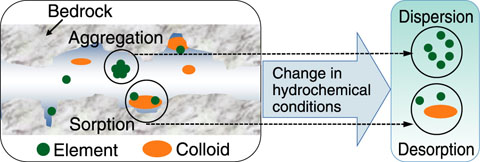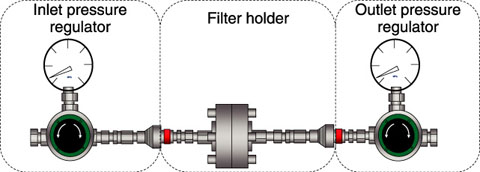
Fig.2-14 Change in colloids with the change in the hydrochemical conditions of groundwater

Fig.2-15 Schematic of the ultrafiltration instrument that maintains pressurized/anaerobic conditions

Fig.2-16 Concentration of Fe (left) and relative concentration of rare earth elements (right) in filtered groundwater at different atmosphere exposure times
Understanding the behavior of elements in an underground environment is important for safety assessment of the geological disposal of high-level radioactive waste. The behavior of elements in an underground environment is mainly controlled by groundwater flow and its interaction with rocks (e.g., adsorption). Additionally, the migration velocity of the elements is accelerated or delayed by colloids (particles in the size range 1 to 1000 nm). However, physicochemical properties of colloids can be changed when the hydrochemical conditions of groundwater change by pressure release and exposure to the atmosphere during sampling (Fig.2-14). This can pose problems when studying the colloids in groundwater. In this study, in order to solve the problem, an ultrafiltration instrument that maintains the in-situ pressure and anaerobic conditions was developed (Fig.2-15).
Ultrafiltration of groundwater at a depth of 200 m was conducted. Chemical analyses of the groundwater were also conducted on samples filtered under atmospheric conditions (exposure time: 180 and 43200 min) and pressurized/anaerobic conditions (exposure time: 0 min), i.e., by using the ultrafiltration instrument (Fig.2-16). The result of the analysis under atmospheric conditions indicates that Fe in the groundwater aggregated and formed colloids by oxidation. Moreover, it was expected that rare earth elements had been adsorbed onto the Fe colloids. Therefore, it was clear that the problem of the colloids changing could be solved by using the ultrafiltration instrument.
The filter in the filter holder can be set aside and transported while maintaining the pressurized/anaerobic conditions. Thus, the colloids adsorbed on the filter can be used for various analyses. In the future, we aim to elucidate the effect of the colloids on the behavior of the elements in groundwater by evaluating the physicochemical properties of the colloids collected by the ultrafiltration instrument.